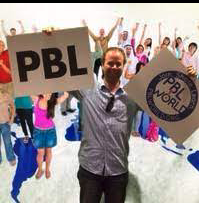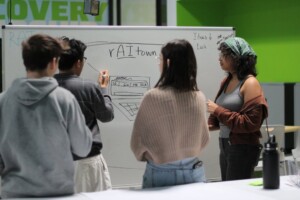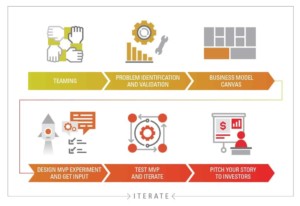Entrepreneurship in K-12 Education

We Need More Entrepreneurs
Our students are now far more likely to have to create their own employment. We can no longer assume that educated young people will enter a workforce where their skills are wanted. We don’t have to prepare students for jobs that do not yet exist, but we do have to prepare them to be agile and adaptable in the face of profound shifts. Our students will go into a constantly changing world that will require flexibility, creativity, collaboration, and the nimbleness to adapt to rapid change. Increasingly, our students will need to think like entrepreneurs.
Sir Ken Robinson famously defines creativity as “having original ideas of value.” Entrepreneurship is about doing something with those ideas. According to the World Economic Forum 2011, “Entrepreneurship refers to an individual’s ability to turn ideas into action and is therefore a key competence for all, helping young people to be more creative and self-confident in whatever they undertake.” Yet the Aspen Institute Youth Entrepreneurship Strategy Group finds that we are too often lacking the entrepreneurial mindset required, and missing the right mix of initiative, collaboration, the ability to recognize opportunities, and the willingness to take those clever risks.
Making Schools More Entrepreneurial
We hear a lot about making schools more entrepreneurial. Often this seems to mean making schools more like businesses. However, entrepreneurship is about more than doing business. The social entrepreneurship movement shows us that the non-profit world can be entrepreneurial as well. Social entrepreneurs are people with innovative solutions to our most pressing challenges. In the words of Ashoka founder Bill Drayton, “Social entrepreneurs are the essential corrective force. They are system-changing entrepreneurs. And from deep within they, and therefore their work, are committed to the good of all.”
Where Can My Idea Go?
In Building School 2.0, Chris Lehmann and Zac Chase argue that, “The entrepreneurial spirit is about owning your ideas and doing, interesting, powerful things with them.” An entrepreneurial school is one where students own their ideas and where they can add value. It is less about what they can remember, and more about where their ideas can go. Schools can encourage students to develop their own ideas and teachers can help students implement them. This is particularly evident when students are included in decision-making processes. Some schools invite students to staff professional learning events and have students attend faculty meetings as equals with the faculty. Other schools even have students sit on panels to interview teaching applicants.
In Innovating for Global Excellence, the authors argue that design and entrepreneurship need to become part of the life of schools. Innovation is needed to break schools out of old dichotomies between knowledge and skills, and traditional rigor and entrepreneurial creativity. Soft skills is the term now being applied to competencies (like the entrepreneurial mindset) which are being prioritized by countries in curriculum reform and redesign. However, changing global conditions mean that such skills are now being seen as anything but soft.
There are many organizations working to scale entrepreneurial mindsets in schools:
Wildfire Education creates learning experiences where students master skills and gain confidence by solving real-world problems on teams. Lemonade Stand is a program which doesn’t ask kids what they want to be when they grow up but instead asks “what problem do you want to solve in the world?” Jump Start is a high school design thinking and social entrepreneurship program. Fix-Ed is a creative, human-centered design program which sees students tackling real community issues whilst learning valuable social entrepreneurship skills. $20 Boss is an immersive entrepreneurship program for high school students, where students are provided $20 of start-up capital to create, launch and operate their venture, and Hack in a Box is a program that gets students solving real-world challenges.
Educators looking to help their students develop entrepreneurial mindsets can take notes on the strategies employed by these resources and adapt them to the needs of their own classrooms.
For more, see:
- Giving Students the Keys to Entrepreneurship Before They Can Drive
- Learn to Earn: The Entrepreneurship Education Landscape
- 9 Global Schools Promoting Entrepreneurship and Leadership
Cameron Paterson is Head of Learning and Teaching at Shore School in Australia. Follow him on Twitter: @cpaterso
Stay in-the-know with all things EdTech and innovations in learning by signing up to receive the weekly Smart Update.






0 Comments
Leave a Comment
Your email address will not be published. All fields are required.